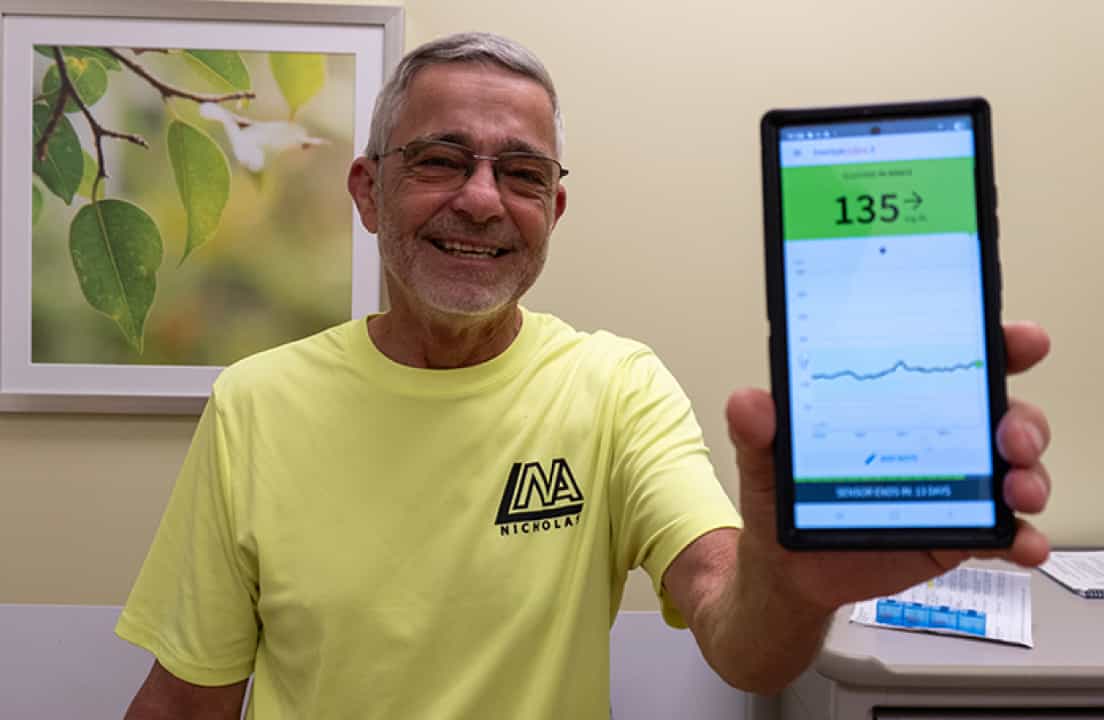T1D Guide
T1D Strong News
Personal Stories
Resources
T1D Misdiagnosis
T1D Early Detection
Research/Clinical Trials
Choosing the Right Insulin Pump
Looking back at when I was first diagnosed with type 1 diabetes (T1D), several warning signs ultimately helped me to determine the issue at hand. For one, I was experiencing frequent thirst and frequent urination (which together was not a fun combo). I also noticed that I suddenly had an appetite larger than ever and was trying to eat everything in sight. Okay, that might be a little dramatic, but I did eat almost an entire Marie Calendar’s Key Lime Pie in one sitting, so it’s not far off.

The one symptom I had that made me realize something was wrong was the sudden blurriness I woke up to one morning. As I had just finished the tiring battle of fighting off mono (mononucleosis) a month prior, the other symptoms could have been easily explained as residual effects. Although, once my eyesight wasn’t even fully restored with my low-prescription driving glasses, I knew something was wrong.
Pens, Needles and Pumps: How I Chose the Right Insulin Pump for Me
Not long after that, an ER doctor confirmed my suspicions, and I was diagnosed with type 1 diabetes. Out of all of the fun take-home goodies and advice they gave me—one piece stood out: I would need to give myself insulin for the rest of my life.

Insulin Pens Vs. Automated Insulin Delivery System
Although this seemed very scary initially, I soon became familiar with using an insulin pen to self-deliver insulin with multiple daily doses. To deliver insulin using a pen, you must first use the dial on the bottom to select the correct number of units to deliver. (You can determine this by using a carb count ratio given to you by your endocrinologist).
Once the correct amount has been selected, you must evaluate the site of injection, which is usually a place with a good amount of fat, such as the back of your arms, stomach, or thighs. Give your skin a little pinch and then a little prick! Congratulations, you have successfully delivered insulin.
Now, all of this was fine and dandy for the first six months or so after my diagnosis. I was still getting comfortable with my new life changes and getting the hang of the technology given to me.
After this point, though, I found myself enticed by the idea of using an insulin pump over a pen. While I enjoyed the general ease of using my pen, there were several issues I had with it that could not be quickly fixed.
Pro Tip: Insulin pump therapy is not a decision to rush into by any means. With so many insulin pumps available, discuss your options with your diabetes care team. Sometimes, a pump company might let you try its insulin pump technology before purchasing. The same applies when choosing a continuous glucose monitor.
The American Diabetes Association says choosing whether or not to use a pump is a personal decision and it's always best to discuss with your healthcare provider what is right for you.
The Perks of an Insulin Pump
I often found myself in need of a unit and a half or somewhere in between, and most insulin pens do not allow for half units. The idea of a constantly attached system attracted me to the insulin pumps, meaning I wouldn’t have to lug around as many things in my purse (blood glucose meter, test strips, etc). After going through this thought process with my healthcare team, we both concluded it was time to try a pump. Yay! Now, which one?
Choosing the Best Insulin Pump for You
As there are several different types of pumps on the market for people with type 1 diabetes, it now came entirely down to personal preference and what was going to fit my lifestyle best. Ultimately, I decided to go with the Omnipod 5, which I have been very happy with. I enjoy the ease of insertion and the lack of tubing. Here is a quick guide to the pros and cons of my current insulin pump.

Omnipod 5 PROS
A Tubeless Pump Design
One of the things I love most about my insulin pump is its lack of tubing. The insulin is stored within a small reservoir inside the pump itself, meaning I wouldn’t have to worry about snagging the tubing on any clothing or furniture, a selling point that was a major plus to me!
Though this may not be as big of an issue for everyone, I knew I led a fairly active lifestyle as a college student and would be running around a lot, so the tubeless design appealed to me.
Personal Diabetes Manager (PDM)
A PDM, or a Personal Diabetes Manager, simply means a smartphone solely used to track and control your Omnipod. The PDM is sort of the “hub” of the Omnipod system, allowing you to bolus, set carb ratios, and track your blood glucose all in one spot.

As the pump you put on your body is simply a mechanical medical device, the PDM is the brain device and blood glucose monitor that allows you to control the pump. Pretty neat, right? I especially love that the PDM is just a reconfigured smartphone, meaning I can stick it in the back pocket of my jeans and forget about it (until someone asks why I have two phones).
Dexcom G6 CGM Integration
Another incredibly helpful feature of the Omnipod 5 is its integration with my Dexcom G6. This means that the two are essentially able to talk to each other (a hybrid closed loop system), allowing my Dexcom to relay information about my blood sugar to my PDM so that it can predict whether my blood sugar is heading low, maintaining itself, or starting to sneak towards a high.
With this information, the PDM is actually able to either deliver extra insulin or restrict insulin delivery on its own in response to what information it receives from the Dexcom. This kind of smart technology is incredible at helping keep my A1C in check, as it can often see where my blood glucose is headed before I can.
Omnipod 5 Cons
Small and Compact Size
Though the Omnipod 5 is compact in that all the mechanics and insulin are held within itself, the pump is far from tiny. The pump’s dimensions are 1.53 x 2.05 x 0.57 in., meaning it sits over half an inch off your skin.
Though there are no tubes to be wary of, I do find myself having to watch for door edges, door frames, and even wall corners if I take a corner too tight! Even though the best of both worlds is always preferred, they are still pretty durable!

Waterproof Adhesive
Now, keep in mind that this one can be easily fixed with a pack of adhesives bought from Amazon, but nonetheless, these babies are not waterproof. This means that if you find yourself enjoying a nice, relaxing dip in a hot tub or holding on for dear life while tubing in the lake, prepare to possibly say goodbye to your good friend, the Omnipod 5.
As you cannot take the whole pump off without replacing it, there really is no fix but an overlay patch. Luckily, these can be bought anywhere from the Omnipod makers themselves to Amazon. Though they are relatively cheap, they do add to the laundry list of costs people with type 1 diabetes already have.
A Small Insulin Minimum
As someone who has had a long honeymoon phase, this last one is a bit of a doozy. The minimum amount of insulin that must be inserted into the Omnipod 5 when setting up a new pump is 85 units, meaning that even if you only use 40 units in the three days the pump is active, you must say sayonara to the remainder of the unused insulin.
And though this might not be an issue for everyone, and for some people, 85 units wouldn’t come close to cutting it, for those who require a fairly small amount of insulin daily, you are essentially throwing away over another three days’ worth of good insulin.
Technology is a Beautiful Thing
Even almost two years later, I am still very happy with my choice to get the Omnipod 5. Even though it has its flaws, no insulin pump or evolving technology is entirely flawless.
I am grateful for the digital devices (insulin pump therapy and continuous glucose monitoring) that help not only keep me alive but also help me to live a fuller life by allowing me to do all the activities I want to do. I’ve found that this is what truly matters.








.webp)
.jpg)
.webp)


.jpg)
.jpeg)

.jpg)
.jpg)



.jpg)



.jpg)




.jpg)

.jpg)



.jpg)

.jpg)




.jpg)
.jpg)
.jpg)
.jpg)
.jpg)
.jpg)
.jpg)

.jpg)
.jpg)

.jpg)



.jpg)
.jpg)
.jpg)

.jpg)

.jpg)














.jpg)


.jpg)







.webp)











.webp)


















.webp)